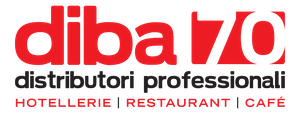The only thing required to prove an item’s worth is a document. This document can be a receipt for the purchase of the asset. If your business’s assets are always recorded at the same cost, then verifying costs is much easier. Verification is easily the most important part of accounting. When you use the cost principle, costs of an asset are always the same. It also means that the value of assets never has to be checked to continue using the cost principle.
In this method, assets are recorded at their current market value. As the name implies, the value changes based on the current market conditions. It can be used when reporting on assets that have been held in anticipation of sale. Cost accounting is one method a company can use to estimate how well the business is running. Cost accounting looks to assess the different costs of a business and how they impact operations, costs, efficiency, and profits. Individually assessing a company’s cost structure allows management to improve the way it runs its business and, therefore, improve the value of the firm.
This team of experts helps Finance Strategists maintain the highest level of accuracy and professionalism possible. At Finance Strategists, we partner with financial experts to ensure the accuracy of our financial content. These factors are specially taken care of and management is kept posted with all developments, including any factors that have arisen and their causes. Costs are classified and sub-divided to provide management with all the details relating to the expenditures incurred to produce a product or render a service. The Ascent is a Motley Fool service that rates and reviews essential products for your everyday money matters. There are some benefits — and a few drawbacks — to using the cost principle, which we’ll examine next.
- Especially for appreciating assets that were purchased years ago like real estate.
- Our writing and editorial staff are a team of experts holding advanced financial designations and have written for most major financial media publications.
- Therefore, both terms can be used—and often are used—in the same sense.
- Something that is a few years old can go out of production.
Other Accounting Methods
An example of cost principle is a business purchasing a plot of land for $40,000 in 2019 that it planned to use as a parking lot. The understanding percentage completion and completed contracts business would report the original cost of $40,000 on its financial statements, despite the asset appreciating in value. The cost principle becomes impractical when you have assets that appreciate in value. When you have an asset that increases in value over time, there is no way to make the balance sheet equal.
Intangible Assets Are Not Recorded
It is assumed that the majority of business owners know what their assets are. However, to be thorough, it is important to state that assets are anything of value owned by a business. Because assets are an essential part of business, it is important that their value is recorded and reported accurately.
Accounts receivable are displayed as a realizable balance. The realizable balance is the balance expected once the accounts are paid on. As such, the net balance for accounts receivable will fluctuate over time, like liquid assets will.
What are the other principles of GAAP?
Therein lies the issue with fair market value – it isn’t predictable. Accounting likes to be predictable, with the exception of intangible assets and liquid assets. The cost principle is more important to a company for historical purposes.
What Are Some Advantages of Cost Accounting?
However, assets such as equipment and machinery should be recorded at face value and remain on the balance sheet at their original cost. Because the cost principle is commonly used, and often required, most accounting software enables it. As such, the use of the cost principle will typically be built-in. This means that when you purchase assets, they are recorded at the same cost from period to period. If assets are always maintained at the original cost, then adjustments are unnecessary.
The cost principle states that costis recorded at the price actually paid for an item. For example, when a retailer purchases inventory from a vendor, it records the purchase at the cash price that was actually paid. This is a practical method of accounting when considering depreciation and its effects on the business. It allows the value of an asset to remain the same over its useful life. This is a great thing for any assets that may depreciate over time.
This is because the price you purchased an asset at may not be the fair market value to another person. You have proof of the purchase, and no one can tell you that the value is lower than that. When using the cost principle, an asset’s value is easy to determine.
Cost accounting aims to report, analyze, and improve internal cost controls and efficiency. Even though companies cannot use cost-accounting figures in their financial statements (or for tax purposes), they are important for internal controls. Marginal costing (sometimes called cost-volume-profit analysis) examines the impact on the cost of a product by adding one additional unit into production. Marginal costing can help management identify the impact of varying levels of costs and volume on operating profit. This type of analysis can be used by management to gain obedience psychology definition insight into potentially profitable new products, sales prices to establish for existing products, and the impact of marketing campaigns.
A long-term asset that will be used in a business (other than land) will be depreciated based on its cost. The cost will be reported on the balance sheet along with the amount of the asset’s accumulated depreciation. Further, the accumulated depreciation cannot exceed the asset’s cost.
The cost principle can be a frustrating concept to absorb. Below are some of the most commonly asked questions regarding the cost principle. The concept of the cost principle can be something that is hard to grasp. It’s hard to picture how something can increase or decrease in value, but still be considered the same value. Here are 5 different examples of the cost principle to help you.
When it comes to accounting, small business owners, who often have no background in accounting, prefer simplicity and consistency. Rather than recording the value of an asset based on fair market value, which can fluctuate widely, your assets will all be recorded at their actual cost. There is an exception for intangible assets purchased from another business.


